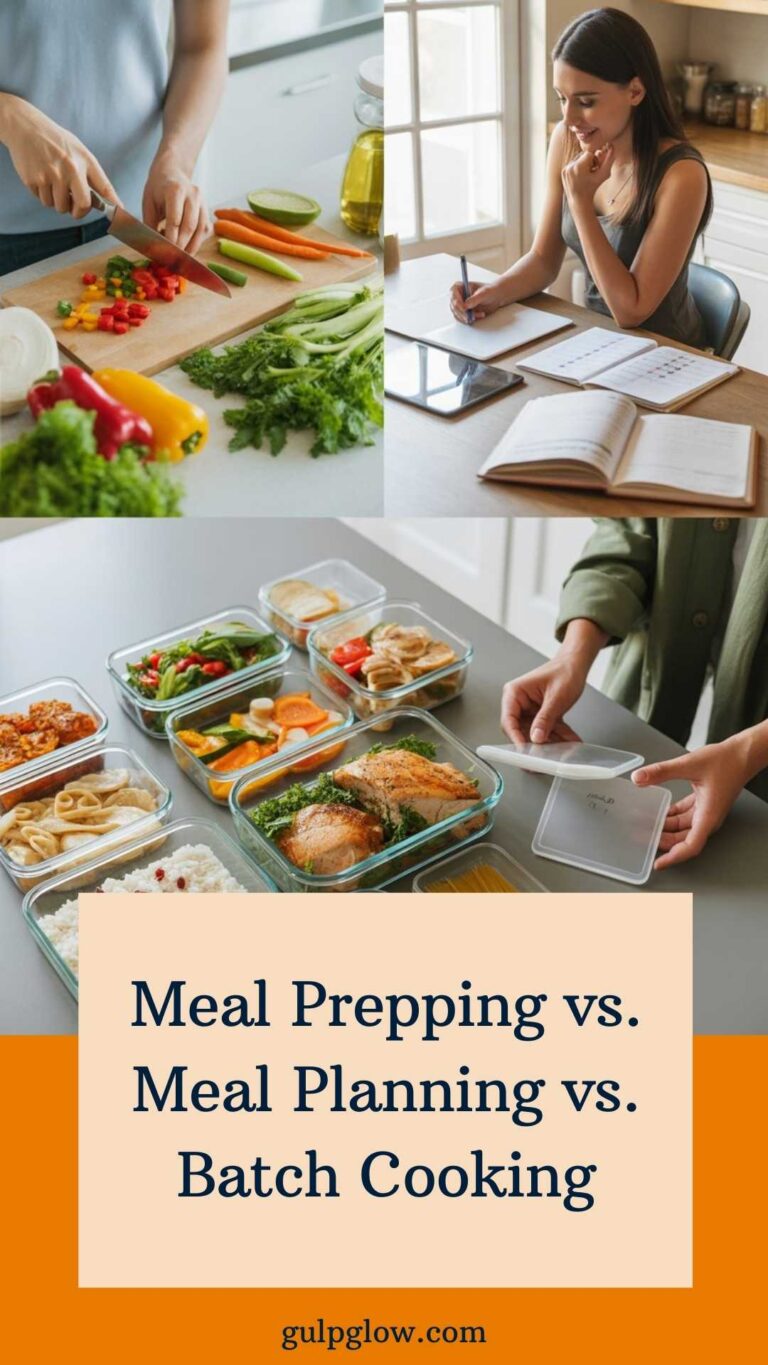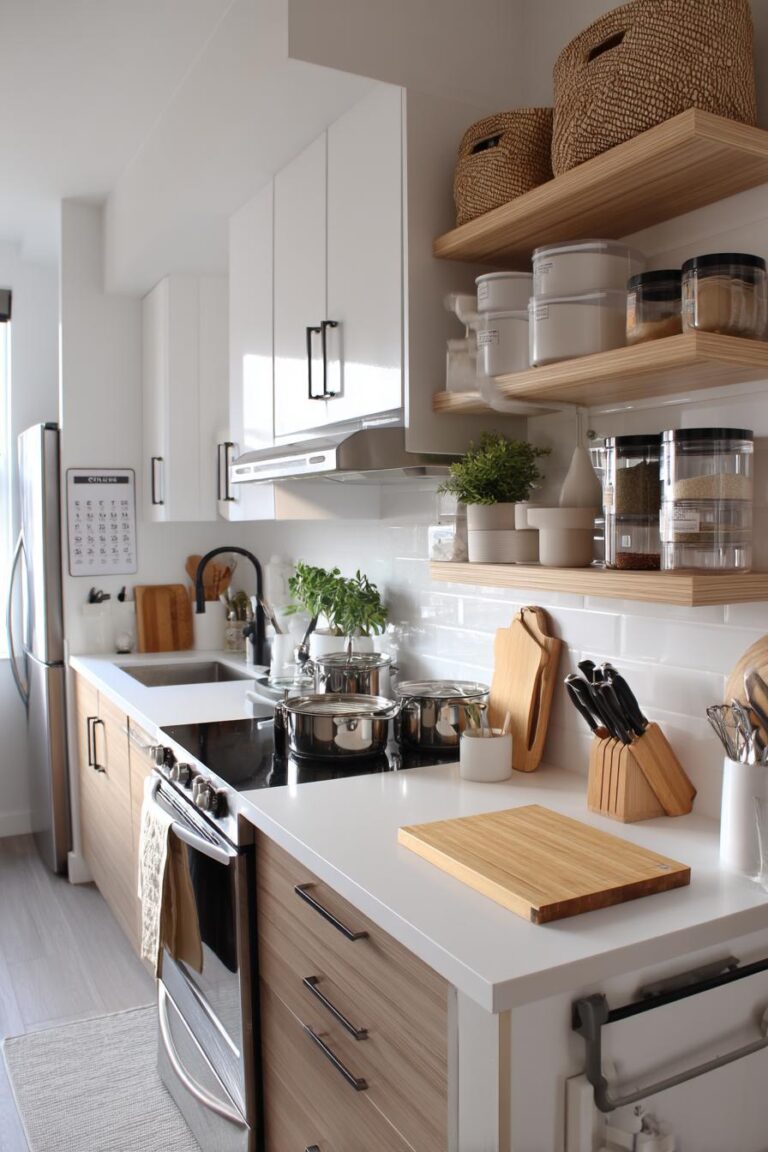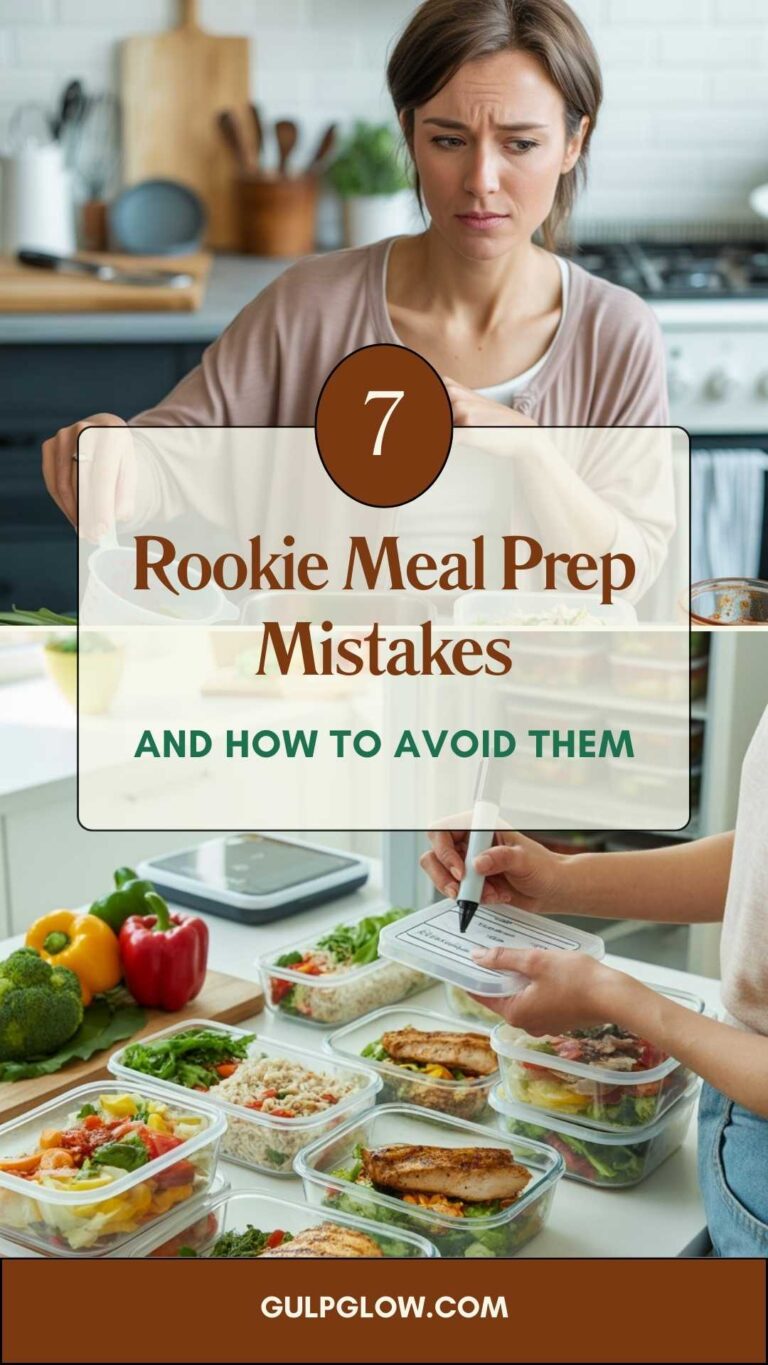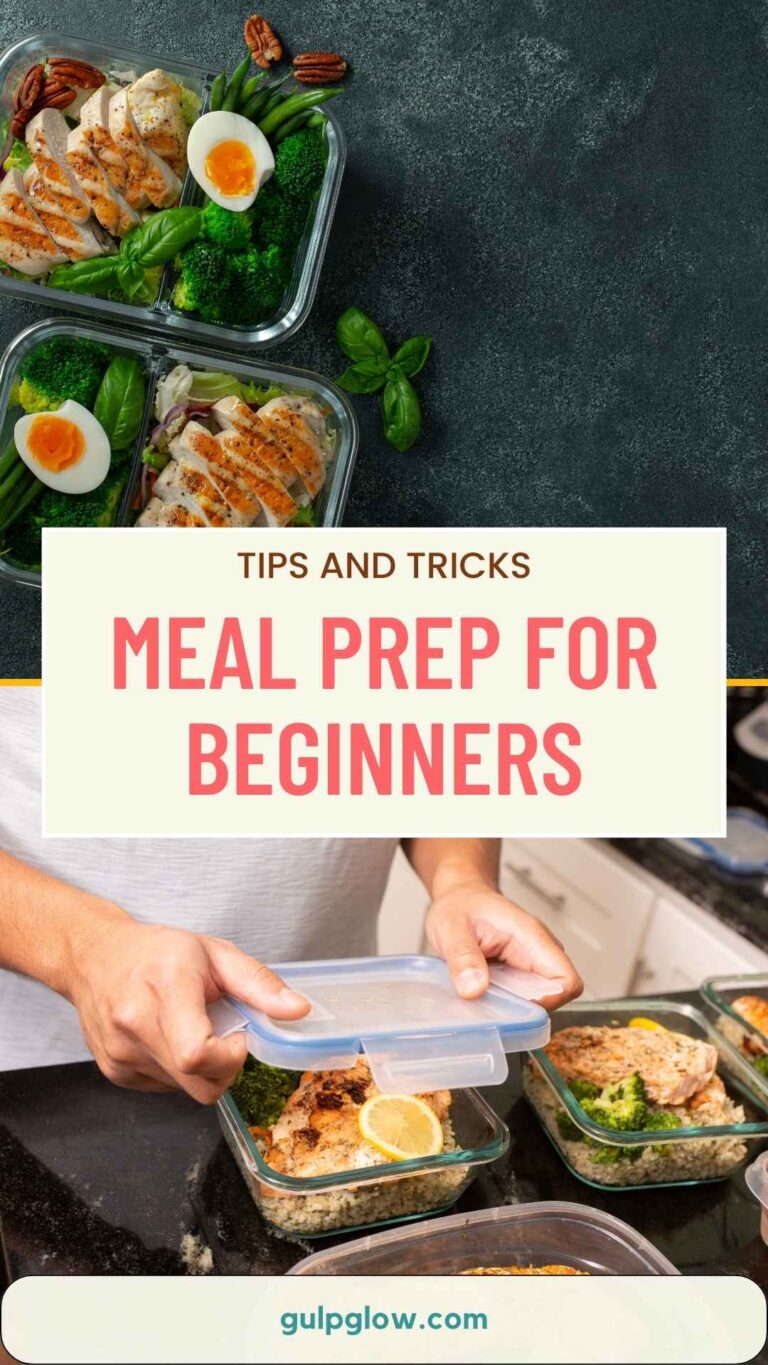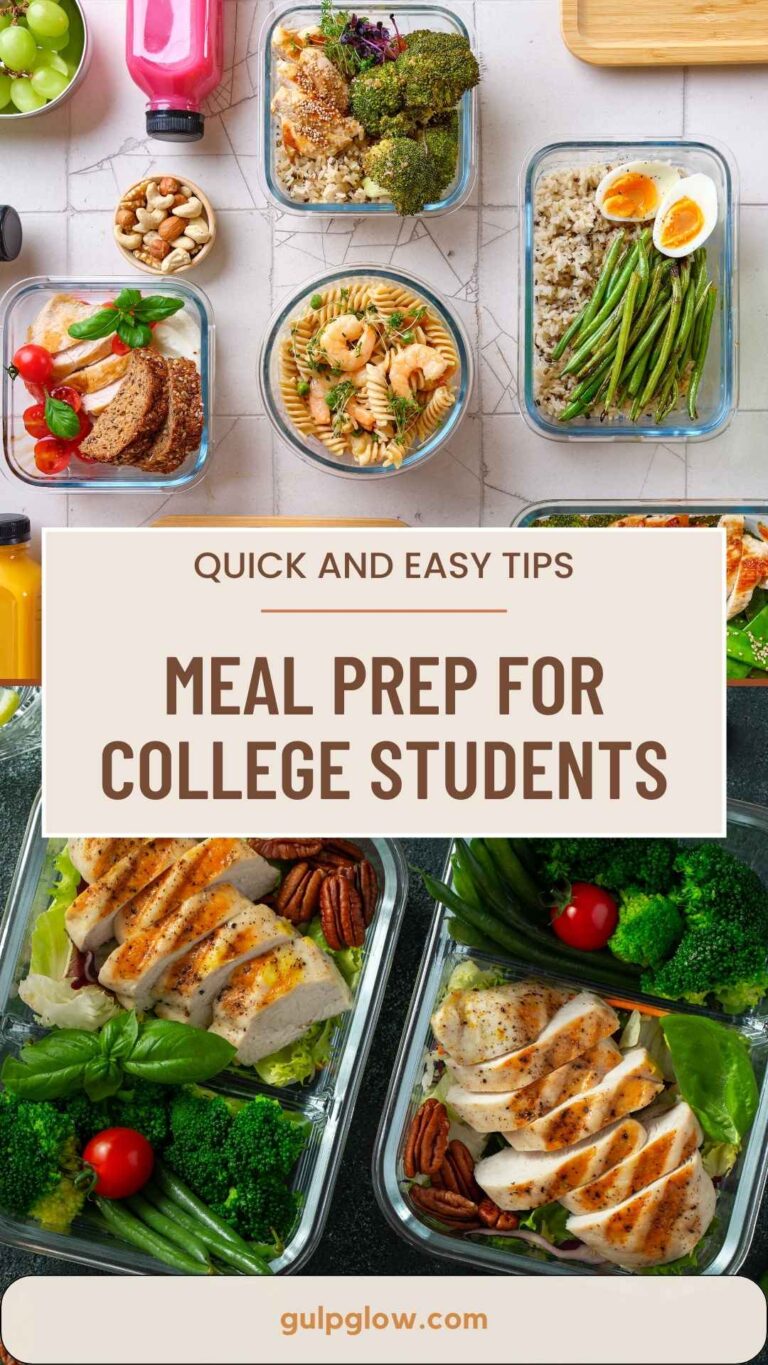How to Meal Prep Your First Week of Food (Without the Overwhelm)
Meal prepping can save you time, money, and a whole lot of stress when life gets busy. To start meal prepping your first week, stick with simple meals, see what you’ve already got, and make enough for a few days. That way, it won’t feel like a huge project, and you’ll actually want to keep going.

You really don’t need fancy ingredients or complicated recipes to get started. Just go with meals you actually like and can make in big batches. Packing leftovers for lunch, or prepping a main meal to eat a few times, helps you get used to it without spending your whole Sunday in the kitchen.
When you organize meals around your own schedule and tastes, meal prep can fit your life instead of the other way around. Once you get the hang of it, prepping ahead just feels like a normal part of your week.
What Is Meal Prepping?
Meal prepping just means you’re making meals ahead of time, usually for the whole week. You cook and portion out your food so it’s ready when you need it. This way, you skip last-minute cooking and free up time during the week.
Benefits of Meal Prepping
Meal prepping helps you save money because you only buy what you’ll use. Planning ahead stops you from grabbing random snacks or eating out. It also cuts down on food waste since you actually use what you buy before it goes bad.
You get more control over what ends up on your plate. Prepping your own meals lets you make healthier choices and avoid the drive-thru. Plus, having food ready to go makes busy days less of a scramble.
When you cook in batches, you spend less time overall in the kitchen. It’s just easier to hit your nutrition goals and keep both your wallet and your schedule happier.
Planning Your First Week of Meal Prep

To get started, think about which meals you want to prep, how much time you can realistically spend cooking, and what foods you’ll actually eat. Keeping it simple and honest with yourself makes it way more doable—and you’ll enjoy your meals more, too.
Setting Realistic Goals
Start small. Don’t try to prep every single meal right away. Maybe just do lunches or dinners at first. That way, you can build the habit without feeling buried by it.
Look at your week. If you only have half an hour to cook on Sunday, don’t pick recipes that need all afternoon. Setting goals that match your time and energy makes it less likely you’ll give up.
Be honest about what you’ll actually eat. There’s no point prepping food you don’t like—you’ll just end up tossing it.
Creating a Meal Prep Plan
Peek at your calendar for the week. Mark busy days when you’ll need something quick or easy to take with you. That’ll help you decide what to prep and how much of it.
Raid your pantry and fridge before you plan. Using up what you’ve got saves cash and avoids waste.
Start with the stuff that takes the longest—maybe roasting veggies or cooking proteins first. Breaking it up into steps makes the whole process less overwhelming.
Jot down your plan in a quick table if that helps keep you organized:
| Day | Meal | Prep Task |
|---|---|---|
| Monday | Lunch | Pack leftover chicken |
| Tuesday | Dinner | Roast vegetables |
| Wednesday | Breakfast | Chop fruit, prep oats |
Choosing Meal Prep Recipes
Go for recipes that are simple and use ingredients you already like. Look for easy recipes with just a few steps—things like roasted veggies, grilled chicken, or a basic stir-fry.
Pick meals that hold up in the fridge, like soups, stews, or salads that won’t get soggy after a day or two.
Aim for a mix of protein, carbs, and veggies to keep your meals filling and balanced.
Switch things up a bit so you don’t get bored—maybe use cooked grains one day and wraps the next.
Search online for beginner-friendly meal prep recipes or just use your tried-and-true favorites.
Essential Tools and Equipment

You don’t need a ton of gadgets, but having a few basics makes meal prep way easier. The right equipment saves time and helps keep your food fresh all week.
Must-Have Meal Prep Tools
Start with a sharp knife and a sturdy cutting board. They make chopping vegetables and proteins faster and less of a hassle. If you have a food processor or blender, use them for chopping or mixing, especially for sauces or purees.
A slow cooker can be a lifesaver for hands-off meals—soups, stews, or big batches of protein with almost no effort.
Measuring cups and spoons help you keep portions in check. Mixing bowls are handy for combining stuff, and if you bake or whip dressings, a hand or stand mixer is nice to have.
Choosing the Right Meal Prep Containers
Pick containers that seal well to keep food fresh and avoid leaks. Glass containers last longer and work in the microwave or oven. If you go with plastic, just make sure it’s BPA-free.
Containers with compartments are great for keeping foods separate. Stackable ones save space in your fridge or freezer.
Look for containers that are easy to clean, preferably dishwasher safe. Clear containers or lids help you see what’s inside without opening everything up.
Grocery Shopping and Ingredient Selection
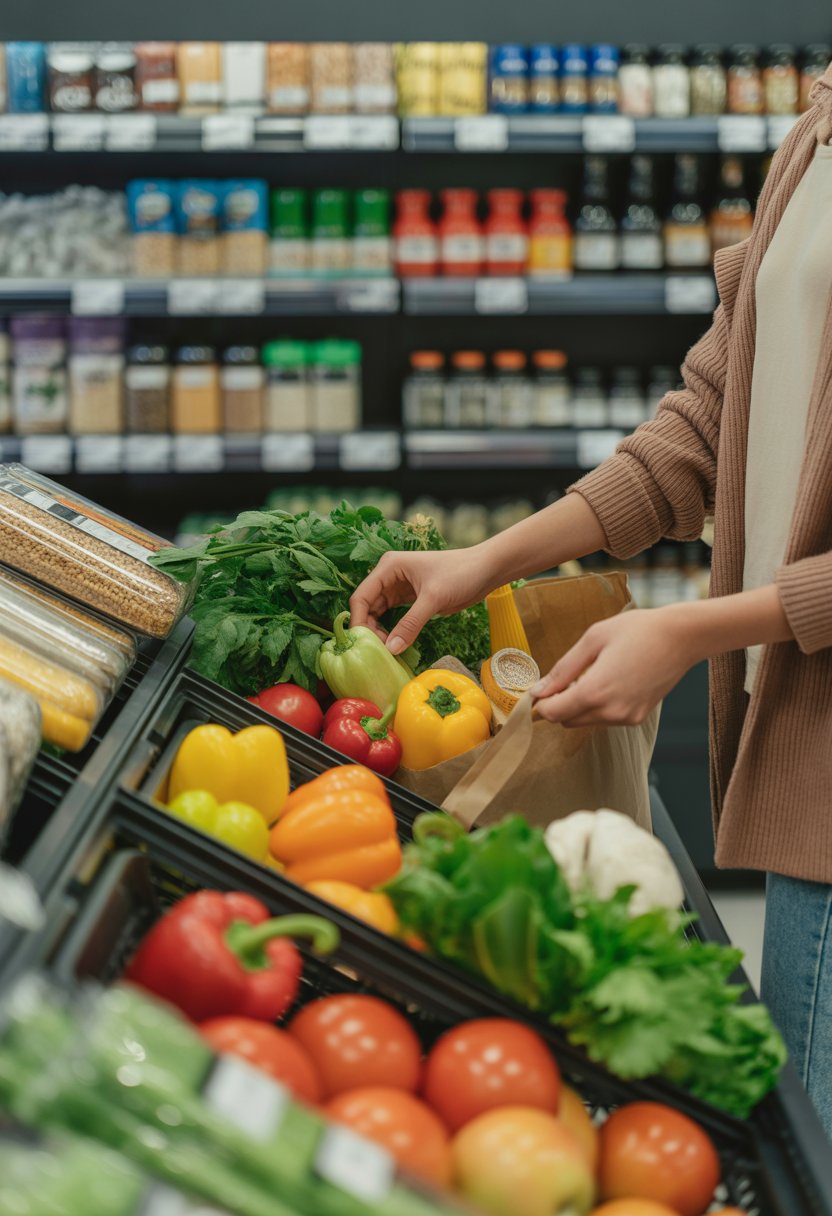
Shopping smart is half the battle. Plan your list, stock up on basics, and pick fresh produce and proteins that’ll actually get you through the week.
Making a Grocery List
Decide what meals you want, then write down every ingredient—including the little stuff like spices or oils. Grouping by category (dairy, veggies, grains) makes shopping faster.
Add a couple of backup options in case something’s out of stock. Don’t forget healthy fats like olive oil or nuts, and staple carbs like rice or whole-grain bread for balance.
Check your kitchen before you shop so you don’t double up. Keep your list on your phone or paper so you can actually use it in the store.
Stocking Up on Pantry Staples
Pantry staples are your best friend. Keep things like rice, pasta, canned beans, and tomatoes on hand—they last forever and work in tons of recipes.
Healthy fats like olive oil, coconut oil, and nut butters are good for cooking and snacking. Basic spices—salt, pepper, garlic powder—go a long way.
If you go through oats or nuts quickly, prep those in bulk. It saves time and means you’re less likely to run out midweek.
Shopping for Fresh Produce and Proteins
Pick fresh veggies and fruits that last, like carrots, broccoli, apples, or oranges. Frozen options work too—they stick around longer and still have plenty of nutrients.
For protein, mix it up with lean meats like chicken or turkey, eggs, and plant-based choices like beans or tofu. Grab fresh fish if you’ll eat it early in the week.
If you’re not sure how much you’ll need, buy smaller amounts and restock later. It’s better than tossing food at the end of the week.
Meal Prep Steps for Beginners

When you’re new to meal prep, just focus on getting ingredients ready ahead of time, cooking in bigger batches, and keeping things organized. Picking a set day to prep can really help cut down on stress during the week.
Prepping Ingredients in Advance
Start by washing, chopping, and portioning your veggies and proteins. That way, you can throw meals together fast. For example, chop bell peppers, onions, and carrots, then stash them in clear containers.
Cook grains like rice or quinoa ahead of time. Airtight containers in the fridge keep everything fresh.
Slap a label on each container with what’s inside and the date. It’s not fancy, but it saves you from guessing later.
Batch Cooking Basics
Pick recipes that keep well, like soups, stews, or casseroles. Cook a bunch at once and divide them into single meals.
Stick to one or two pots or pans to cut down on dishes. Roast a couple trays of veggies together, or simmer a big pot of chili and you’re set.
If you’re not eating everything soon, freeze some meals. That way, you get more variety without extra work.
Organizing Your Cooking Workflow
Lay out all your tools and ingredients first. It saves time and keeps your kitchen a little less chaotic.
Try to cook similar foods together—maybe roast all your veggies while your protein sizzles on the stove.
Clean as you go. Washing a few things between steps is way better than facing a mountain of dirty dishes at the end.
Sunday Meal Prep Routine
Pick Sunday—or honestly, any day that fits your schedule—to tackle meal prep. Start by sketching out what you want to eat for the week.
Make a grocery list based on your plan. Try to stick to it so you don’t end up with a bunch of stuff you’ll never use.
Set aside a few hours to cook and portion out your food. That might mean chopping, batch cooking, and stashing meals in containers for later.
Once you’re done, pop everything in the fridge or freezer right away. That way, your food stays fresh and you’re set for the week.
Sample Meal Prep Ideas for the Week
Building your week’s meals around simple recipes can really save time—and sanity. I lean toward easy breakfasts, hearty lunches, and balanced dinners, plus little tricks to use up leftovers. It just makes sticking to a plan so much less stressful.
Breakfast Options: Overnight Oats
Overnight oats are honestly one of the easiest breakfasts out there. Just mix oats with milk or yogurt, add a bit of honey or fruit, and let it soak in the fridge overnight. In the morning, it’s ready to go.

You can top your oats with whatever you like—nuts, chia seeds, berries. It keeps things interesting and adds some crunch and nutrition. Plus, you can make a few jars at once since they stay good for several days.
This breakfast is healthy, filling, and you don’t have to fuss with cooking. Just grab a jar and head out the door.
Lunch Favorites: Taco Bowl
Taco bowls are a lunch I keep coming back to—they’re quick to assemble and never boring. Start with rice or cauliflower rice, then pile on seasoned ground meat or beans for your protein.
Add veggies like tomatoes, lettuce, and avocado. Salsa and cheese go a long way, and a squeeze of lime wakes everything up. Portion out the ingredients in containers, so you just toss them together when it’s time to eat.
Switch things up with chicken, tofu, or extra veggies if that’s more your style. These bowls last several days in the fridge and don’t get soggy.
Dinner Solutions: Protein Pasta
Protein pasta makes dinner quick and surprisingly satisfying. I like using pasta made from lentils, chickpeas, or whole wheat for an extra boost. Keep the sauce simple—marinara or pesto does the trick.
Throw in cooked veggies like spinach, mushrooms, or bell peppers for color and nutrition. Add grilled chicken, shrimp, or tofu if you want even more protein.
You can prep the pasta and sauce ahead, then just combine them when you’re hungry. It’s easy, but honestly, it hits the spot.
Creative Uses for Leftovers
Leftovers are a lifesaver when you’re meal prepping. Toss leftover proteins and veggies into burrito bowls or stir-fries with fresh rice or noodles—easy and fast.
Blend cooked veggies into soups or fold them into casseroles for a change of pace. This keeps meals interesting and means you’re not wasting food.
Jot dates on your containers so you know what to eat first, and don’t be afraid to mix things up so you’re not eating the same meal on repeat. It keeps things fresh—literally and figuratively.
Storing, Reheating, and Reducing Food Waste
How you store your meals really matters for keeping things fresh and safe. Reheating can be tricky—nobody wants soggy leftovers or cold spots. A little planning also goes a long way toward avoiding food waste.
Proper Meal Storage Techniques
Let your cooked food cool off before packing it up. If you put hot food straight into containers, you’ll get condensation, and that just speeds up spoilage.
Airtight containers are your friend here. They keep air out, which helps food last longer. I like glass or BPA-free plastic since you can reuse them and they’re safe.
Label containers with the cooking date. That way, you can eat the oldest stuff first and toss less.
Most meals keep in the fridge for up to four days. If you need them to last longer, just freeze them—they’ll be good for weeks.
Reheating Prepared Meals Safely
Before you reheat, check that your meal cooled completely before storing. It’s one of those little steps that cuts down on bacteria risk.
When reheating, make sure the food gets hot all the way through—aim for 165°F (74°C). Give it a stir halfway so there aren’t any cold spots left.
If you’re using the microwave, leave a little vent in the lid so steam can escape. That helps keep things from getting soggy.
Try not to reheat the same meal more than once. Each round knocks down the quality and ups the risk for bacteria. Not really worth it, right?
Minimizing Food Waste with Meal Prepping
Plan your meals around what you’ll actually eat—no need to cook for a crowd if it’s just you. Making too much usually leads to leftovers that end up forgotten.
Leftovers don’t have to be boring. Toss extra veggies into soups or mix them with rice. That little bit of creativity goes a long way to reduce food waste.
Try batch cooking, but portion things out into single servings. When you prep in smaller amounts, it’s way easier to finish everything and skip tossing food later.
Got more than you’ll eat soon? Just freeze those meals. They’re a lifesaver on days when you can’t be bothered to cook.
Before heading to the store, check what’s already in your fridge or pantry. That quick scan saves you from buying doubles and watching good food go bad.


